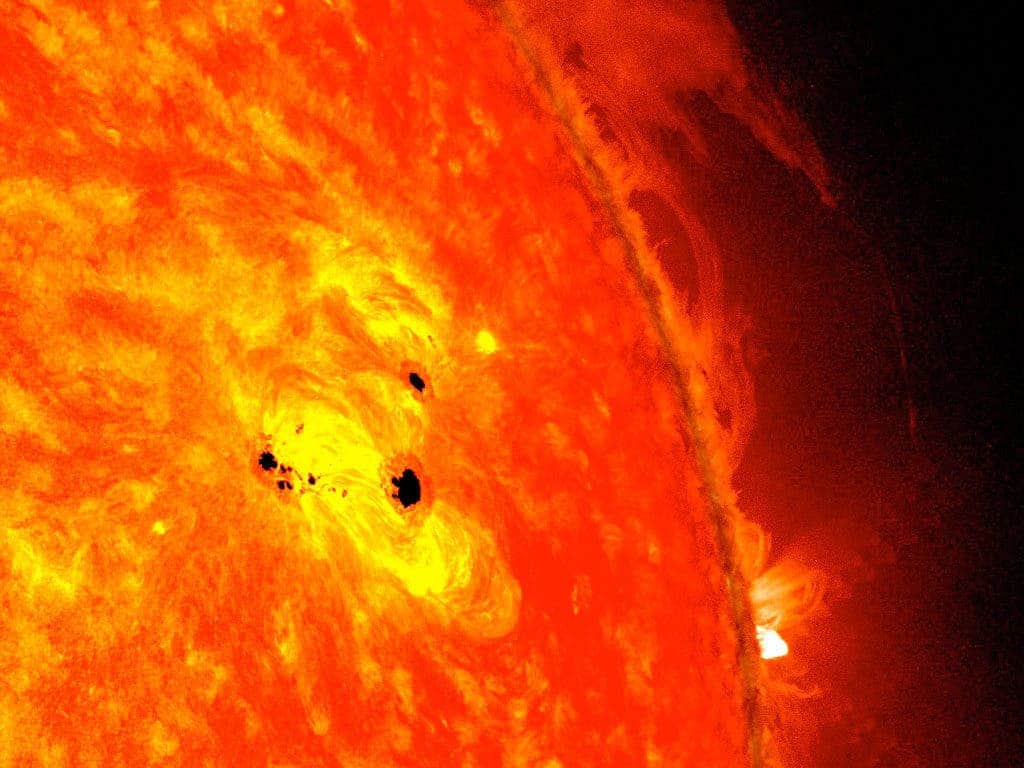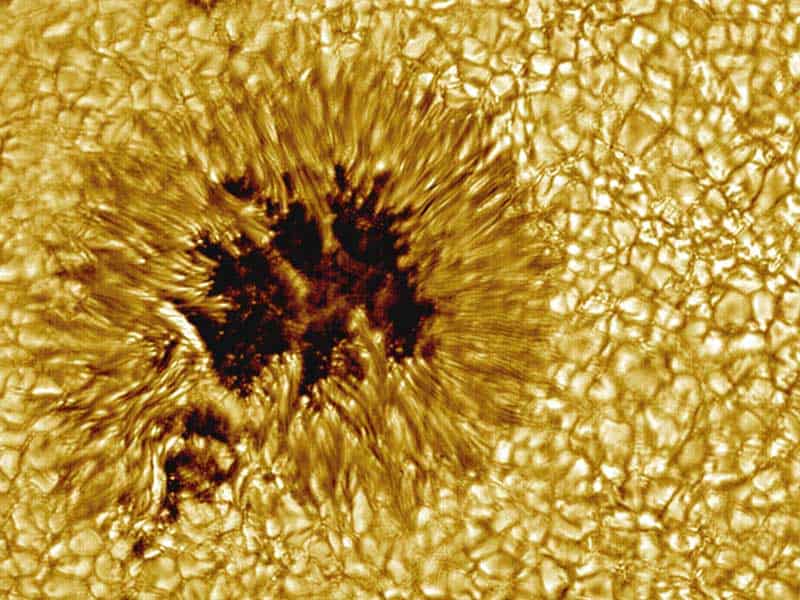
The sun’s magnetic flux, that rises to the surface, varies up and down with an 11-year periodicity which scientists call the solar cycle. Though astronomers have been aware of solar cycles and sunspots since the 12th century, the physics that governs these processes are not completely understood.
To fill in the blanks, a team of researchers from Aarhus University, Denmark, turned to another star located 120 light years away. This star is very similar to the sun in many respects, yet its solar cycle is quite dissimilar. By studying the slight differences in the two stars’ properties, scientists were able to ascertain new insight about solar cycle physics.
When the solar cycle approaches a minimum, it is rare to see sunspots on the surface of the sun. These are regions where the solar magnetic field is very strong, and they appear darker since they are a few thousand degrees cooler than their surroundings. For instance, the sun’s surface has an average temperature of about 5,400 degrees Celsius, but the temperature of a big sunspot can drop to nearly 4,000 degrees Celsius. Conversely, during the solar maximum the sun’s surface is littered with sunspots, often with as many as 100 spots visible at one time.
For solar physicists, the sunspot cycle is a major indicator of how the sun’s magnetic field is generated, and the evolution of various patterns of plasma circulation near the solar surface and interior. Therefore, it’s very important to learn as much as we can about these cycles. Not least because they are responsible for some of the sun’s most capricious — but also dangerous — behaviors.
The high points in the solar cycle are characterized by frequent and violent outbursts of coronal mass — huge bubbles of gas threaded with magnetic field lines that are ejected from the Sun over the course of several hours. When these strike the Earth, the consequences can be catastrophic. Some even claim a really powerful coronal mass ejection could fry most electronics on Earth or our communication satellite fleet up in orbit. Some of you might remember the 1989 Quebec incident, when the whole city was blackout after the entire grid got fried, causing an estimated $2 billion Canadian in damage at the time. Besides blackouts, CMEs can also disrupt GPS signals and radio telecommunications.
Heavy elements and solar variability

Researchers led by Cristoffer Karoff from Aarhus sought to gain new insight about solar cycles by studying the solar dynamo of a nearby star, which sits in the constellation of Cygnus. This star has the same mass, radius, and age as the sun. What’s different, though, is its chemical composition, comprising around twice as many heavy elements as in the sun.
“The unique combination of a star almost identical to the sun, except for the chemical composition, with a cycle that has been observed from both the Kepler spacecraft and from ground makes this star a Rosetta Stone for the study of stellar dynamos,” explains Karoff.
By combining space observations performed by the Kepler telescope with ground-based reading, some dating as far back 1978, the team established that the sun look-alike star has a 7.4-year cycle. It’s the most detailed set of observations for a solar cycle in any star other than the sun.
The analysis suggests that the amplitude of the star’s cycle is nearly twice as strong as that of the sun’s cycle. As far as visible light is concerned, the difference is even more striking. All of this suggests that heavy elements in the composition of a star lead to a stronger cycle.
The researchers performed a model of the physics that might take place in the deep interior of the star and which could explain what they were seeing. This model suggests that heavy elements change the energy transport deep inside the star from radiation to convection by making the star more opaque. Secondly, heavy elements influence processes on the surface and in the atmosphere of the star. The more heavy elements are in the composition of a star, the higher the contrast will be between diffuse bright regions (faculae) and the quiet solar background.
Studies such as these are important because they help scientists gain a better grasp of how the sun’s irradiance has changed over time, with important consequences for Earth’s climate. For instance, in the 17th century during a period called the Maunder Minimum, sunspots virtually disappeared from the surface of the sun for over 50 years. This period coincided with a relatively cold climate, particularly in Northern Europe.
Scientific reference: Christoffer Karoff et al, The Influence of Metallicity on Stellar Differential Rotation and Magnetic Activity, The Astrophysical Journal (2018). DOI: 10.3847/1538-4357/aaa026.



